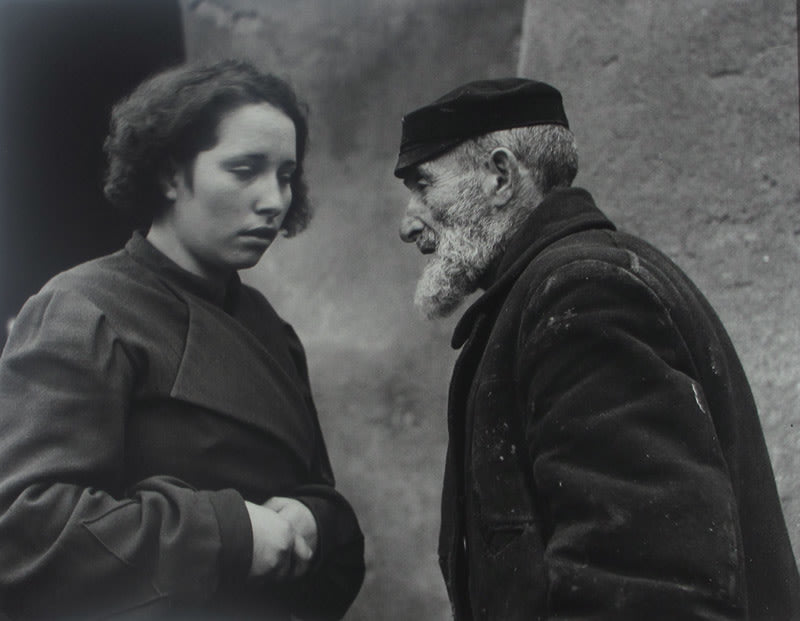
Roman Vishniac
Grandfather and Grandaughter, Warsaw by Roman Vishniac
 Toronto, ON)
Toronto, ON)
Learn about our Shipping & Returns policy.
Have a question? Read our FAQ.
- Artwork Info
- About the Artist
- About this Photograph
- Artist News
-
1938
Gelatin silver print
Signed, in ink, au recto
Signed, titled, and dated, in ink, au verso
Printed circa 1985 -
Born in 1897 to a wealthy Russian-Jewish family, Vishniac immigrated to Berlin in 1920 in the aftermath of the Russian Revolution. As an amateur photographer, he took to the streets with his camera throughout the 1920s and ’30s, offering astute, often humorous visual commentary on his adopted city and experimented with new and modern approaches to framing and composition. Documenting the rise of Nazi power, he focused his lens on the signs of oppression and doom that soon formed the backdrop of his Berlin street photography. From 1935 to 1938, while living in Berlin and working as a biologist and science photographer, he was commissioned by the American Jewish Joint Distribution Committee (JDC), then the world’s largest Jewish relief organization, to photograph impoverished Jewish communities in Central and Eastern Europe. On New Year’s Day, 1941, he arrived in New York and soon opened a portrait studio. At the same time, he began documenting American Jewish communal and immigrant life and established himself as a pioneer in the field of photomicroscopy. In 1947, Vishniac returned to Europe and documented Jewish displaced persons camps and the ruins of Berlin. During this time, he also recorded the efforts of Holocaust survivors to rebuild their lives, and the work of the JDC and other Jewish relief organizations in providing them with aid and emigration assistance.
– Source: International Center of Photography -
This photograph was included in Vishniac’s landmark 1983 publication, A Vanished World, which was one of the best known documents of Jewish culture prior to the Holocaust.
“The hat that the man is wearing is typical of those found in Lublin, Warsaw, and other nearby areas. I should speak in the past tense – was. When I passed them, I overheard them speaking and I could hear her call him ‘grandfather’. I did not know what they were talking about. However, my first thought was that they had a very difficult problem that needed an immediate solution. And seemingly it was just impossible for them to achieve this at that moment. I had a Rolleiflex under my coat – that was the only way that I could have gotten so close to them and maybe to their problem – if it was ever solved. I wonder. But, most important, I did not want them to know that I was there photographically eavesdropping on their lives. Also, it was important that the police did not know about my activities with my cameras, otherwise, as before, I would have been accused of being a spy. I photographed in the secretive manner because most people want to look different – more important than they are, even better than they appear. This ‘invisible approach’ is the photography of natural reaction and the response that I want. The first condition is not to let the people know that you are taking the picture. You must take the picture as it is. And only then do you get a little piece of life. Maybe it is a happy expression, or maybe it is a sad expression – but it is a natural expression, and that is what I am after.” – Capa, Cornell (Editor), Edelson, Michael (Text), The Concerned Photographer 2, New York, Grossman Publishers, 1972.
PROVENANCE: Purchased by the current owner in NY circa 1990 -
Terror in focus: the Jewish photographer who captured the rise of Nazism - The Guardian, October 2018

